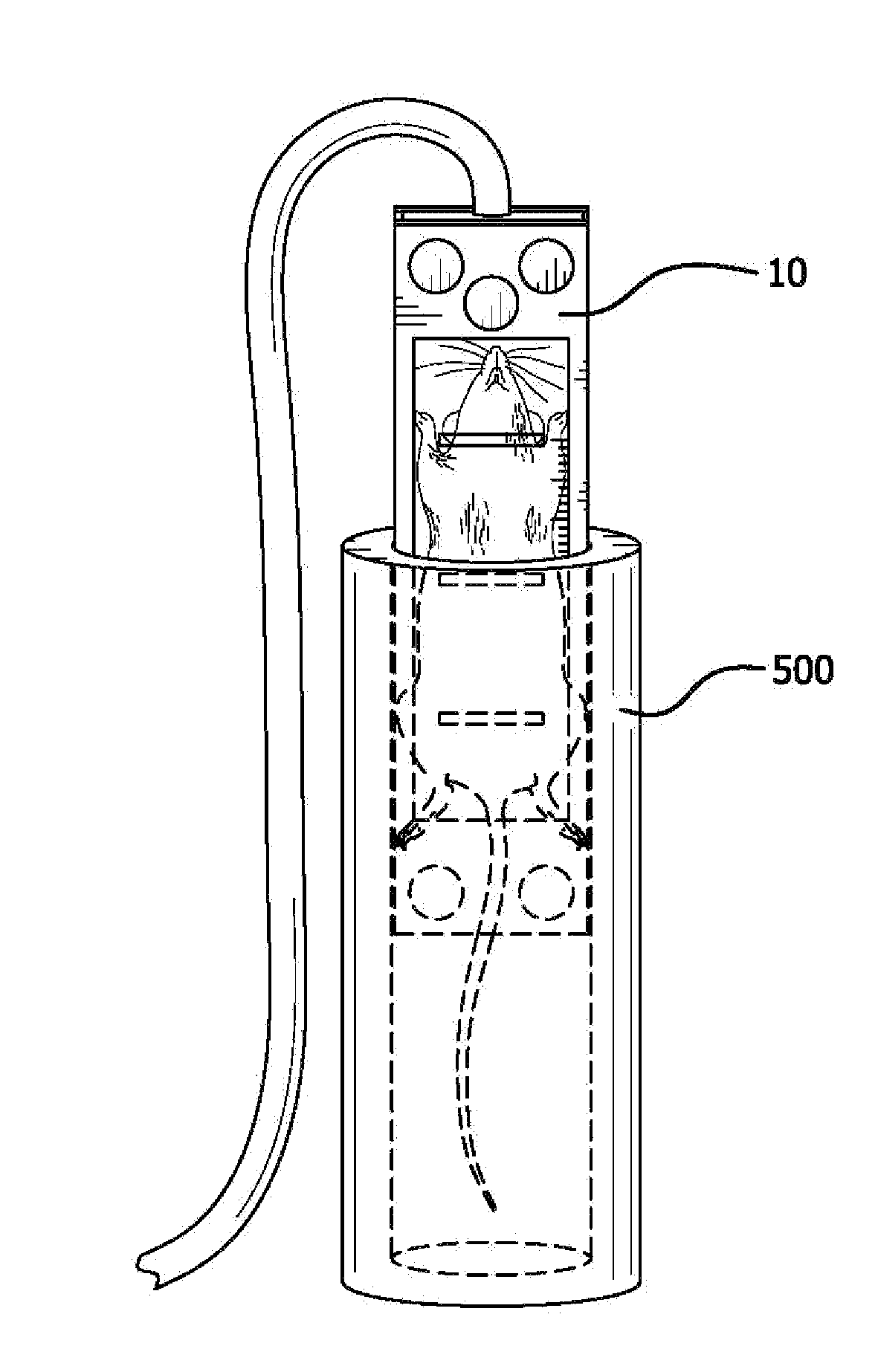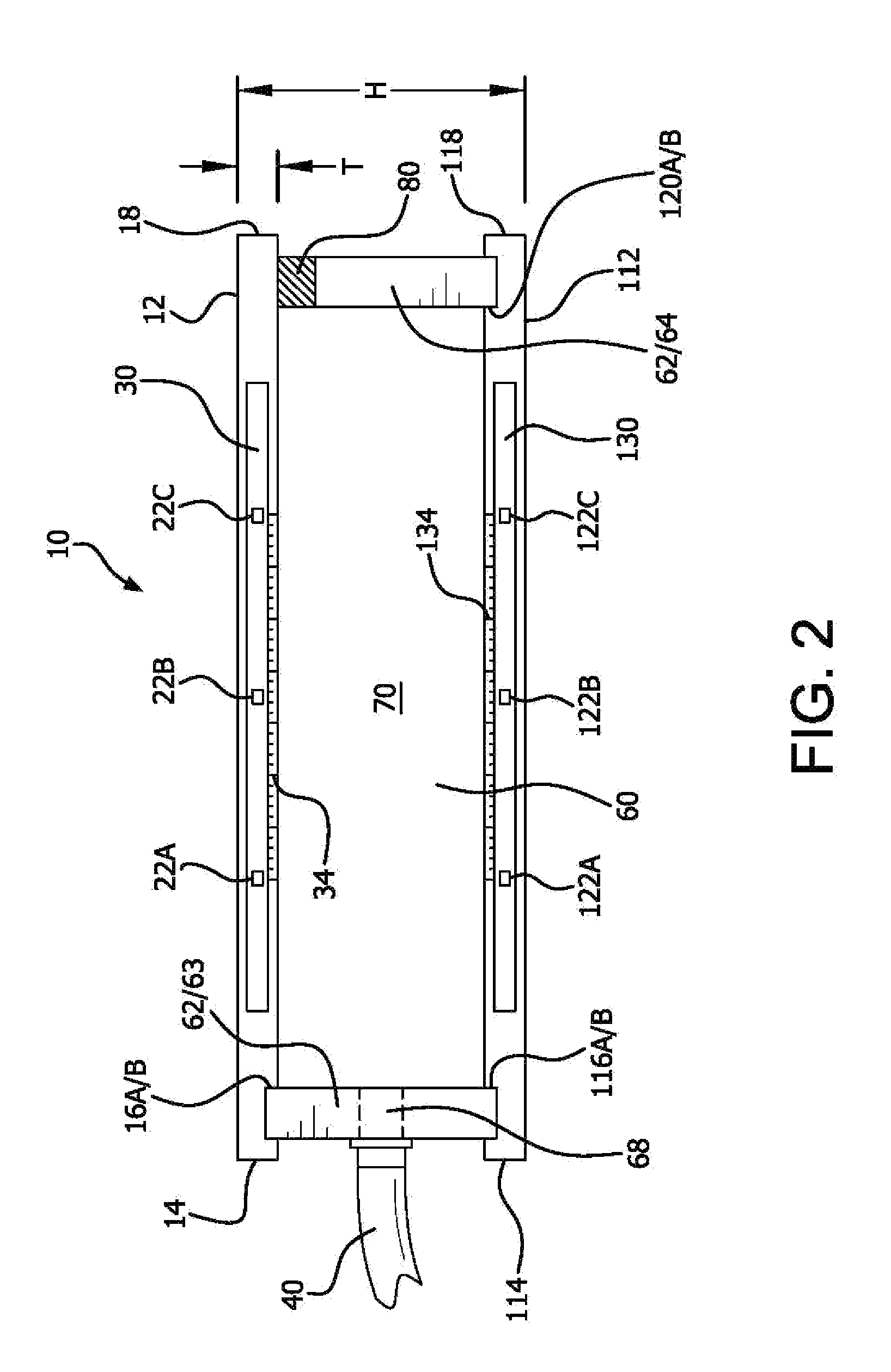Systems for fusion of fluorescence molecular tomography and magnetic resonance images
- Summary
- Abstract
- Description
- Claims
- Application Information
AI Technical Summary
Benefits of technology
Problems solved by technology
Method used
Image
Examples
example 1
Use of FMR-MRI Image Fusion to Measure the Concentration of Fluorescent Probes in a Genetically Modified Mouse Model of Ovarian Cancer
[0073]Transgenic mice. TgMISIIR-TAg mice are a mouse line developed in house, which develop spontaneous ovarian tumors (Connolly, D. C. et al. (2003), Cancer Research 63:1389-97). TgMISIIR-TAg mice were genotyped by PCR amplification of the TAg transgene. Mice were maintained on a standard diet (2018SX Teklad Global, Harlan Laboratories, Somerville, N.J.) and transitioned to a purified, alfalfa free rodent chow (Teklad AIN-76A, Harlan Laboratories, Somerville, N.J.) for a minimum of 24 hours prior to fluorescent imaging to minimize fluorescence in the gut. Procedures were approved by the Fox Chase Cancer Center (FCCC) Institutional Animal Care and Use Committee, and mice were maintained under specific pathogen free conditions.
[0074]Optical imaging agents. For optical imaging of ovarian tumors and cells, commercially available imaging probes designed t...
example 2
Image Fusion Validation
[0084]FIG. 11 shows the application of the methods described in Example 1 for determining the concentration of Prosense® 680 in a large ovarian tumor. FIG. 11A shows a mid-coronal slice through the MRI dataset with the tumor and kidneys labeled. FIG. 11B shows the FMT dataset in the same spatial plane, with the Prosense® 680 signal from the instrument's 680 nm channel concentrated in the tumor, and the AnnexinVivo 750 signal from the instrument's 750 nm channel. FIG. 11C shows an overlay of the MRI and FMT signals, showing good co-localization of the reconstructed fluorescent signals and anatomy from MRI.
[0085]FIG. 12 shows the application of the methods for detecting and measuring the Prosense® 680 concentration in two small, bilateral tumors in a different transgenic mouse. MRI (FIG. 12A), FMT (FIG. 12B) and FMT-MRI fusion (FIG. 12C) images are labeled the same way they were labeled in FIG. 11.
[0086]FIG. 13 shows the detection of the Intregrisense 680 in two...
PUM
 Login to View More
Login to View More Abstract
Description
Claims
Application Information
 Login to View More
Login to View More - R&D
- Intellectual Property
- Life Sciences
- Materials
- Tech Scout
- Unparalleled Data Quality
- Higher Quality Content
- 60% Fewer Hallucinations
Browse by: Latest US Patents, China's latest patents, Technical Efficacy Thesaurus, Application Domain, Technology Topic, Popular Technical Reports.
© 2025 PatSnap. All rights reserved.Legal|Privacy policy|Modern Slavery Act Transparency Statement|Sitemap|About US| Contact US: help@patsnap.com



